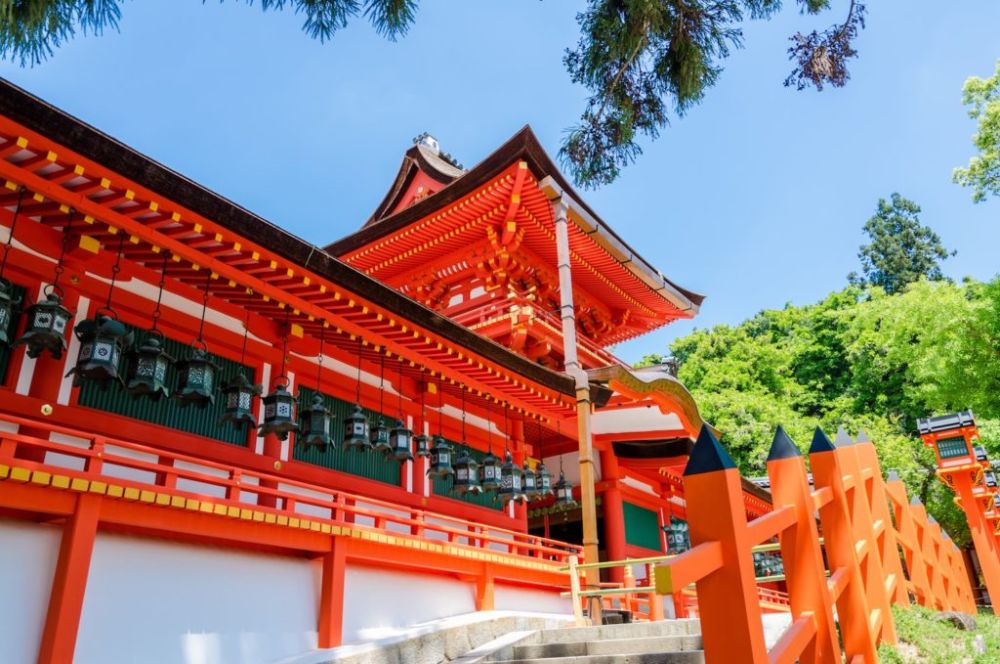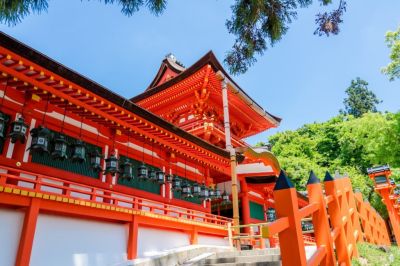

Embark on a guided tour to explore the historical Kasuga Taisha Shrine, one of Nara’s most celebrated Shinto shrines. Established in the 8th century, it is famous for its hundreds of bronze and stone lanterns that line its approach and precincts. The guided tour will offer insights into the rich history, spiritual significance, and unique architecture of the shrine, including its vermilion-colored buildings and the stunning backdrop of the Kasugayama Primeval Forest. Visitors will learn about the deity enshrined here, as well as the rituals and festivals that take place throughout the year. Moreover, the tour enables a deeper understanding of Shintoism and its role in Japanese culture. Don't miss the chance to see the lanterns lit during one of the evening lantern festivals, creating an ethereal atmosphere.
Kasuga Taisha Shrine is host to various seasonal festivals that allow visitors to experience traditional Japanese culture. One of the most famous is the Kasuga Matsuri, characterized by ritual dances and music performances known as 'shinji'. During the Mantoro Festival, held biannually in early February and mid-August, the shrine's thousands of stone and metal lanterns are illuminated, casting a warm glow throughout. The Shika-no-Tsunokiri, or Deer Antler Cutting Ceremony, is another remarkable event that takes place every October, showcasing the safe trimming of the antlers of the free-roaming Nara Park deer, considered messengers of the gods. Each festival offers a unique perspective on the local customs and provides an immersive experience for visitors.
The shrine is situated in the vicinity of the Nara Deer Park, where numerous friendly deer roam freely. These deer are seen as sacred messengers of the Shinto gods in the local belief system. Visitors have the unique opportunity to interact with the deer, feeding them with special crackers called 'shika senbei' that can be purchased within the park. It is a delightful experience for all ages as one learns how to bow to the deer and observe their polite bowing in return. Photography with the deer against the backdrop of the shrine is popular, but visitors are reminded to be respectful and gentle with these cherished animals to ensure a pleasant experience for all.
For a more personal spiritual encounter, visitors can participate in various priest-led workshops that delve into the Shinto customs of the shrine. These experiences can include learning to write Japanese calligraphy, participating in a traditional tea ceremony, or taking part in purification rituals. The workshops often begin with a brief history of the shrine and an explanation of its cultural importance. Attendees are then guided through a series of traditional practices designed to provide a deeper understanding of Shintoism and its everyday role in the lives of Japanese people. It's an enriching experience that connects visitors to the ancient traditions that are still practiced at Kasuga Taisha today.
Visitors to Kasuga Taisha Shrine may acquire 'omamori', traditional Japanese amulets that are said to provide various forms of luck or protection. There are different types of omamori, each with its specific purpose, such as ensuring good health, success in exams, prosperous business, or safe travel. Omamori can be purchased at the shrine's shop, where they are blessed by the priests. Buying an omamori not only serves as a personal talisman but also as a meaningful souvenir or gift. Visitors often return used omamori to the shrine, where they are burned in a ritual to show respect and gratitude for the blessings received.
Adjacent to Kasuga Taisha Shrine, the Manyo Botanical Garden showcases plant species mentioned in the Manyoshu, Japan's oldest collection of poetry. The garden provides a scenic and educational stroll, as visitors can admire a diverse range of flora while learning about the historical significance and literary references of the plants. Each season brings a different look to the garden: cherry blossoms in spring, vibrant greenery in summer, colorful foliage in autumn, and a serene snow-covered landscape in winter. The connection between the plants and Japanese poetry enriches the experience, offering a unique window into classical Japanese culture.
